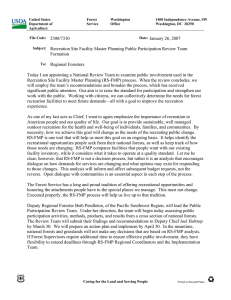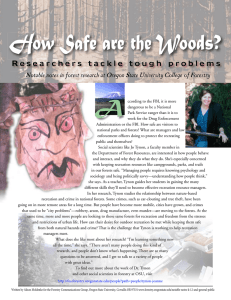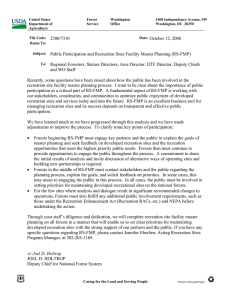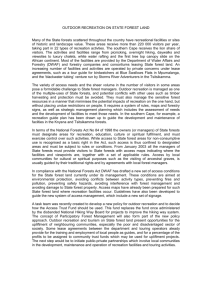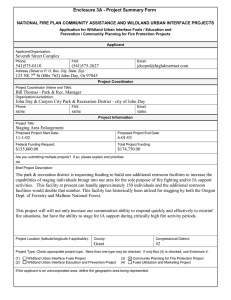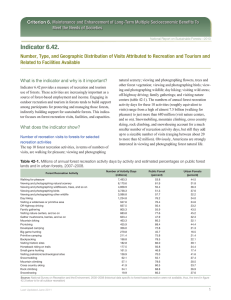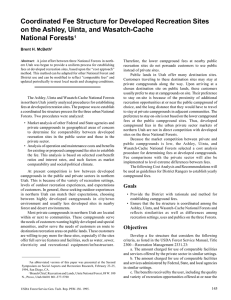A national assessment of physical activity on U.S. national forests Topic
advertisement
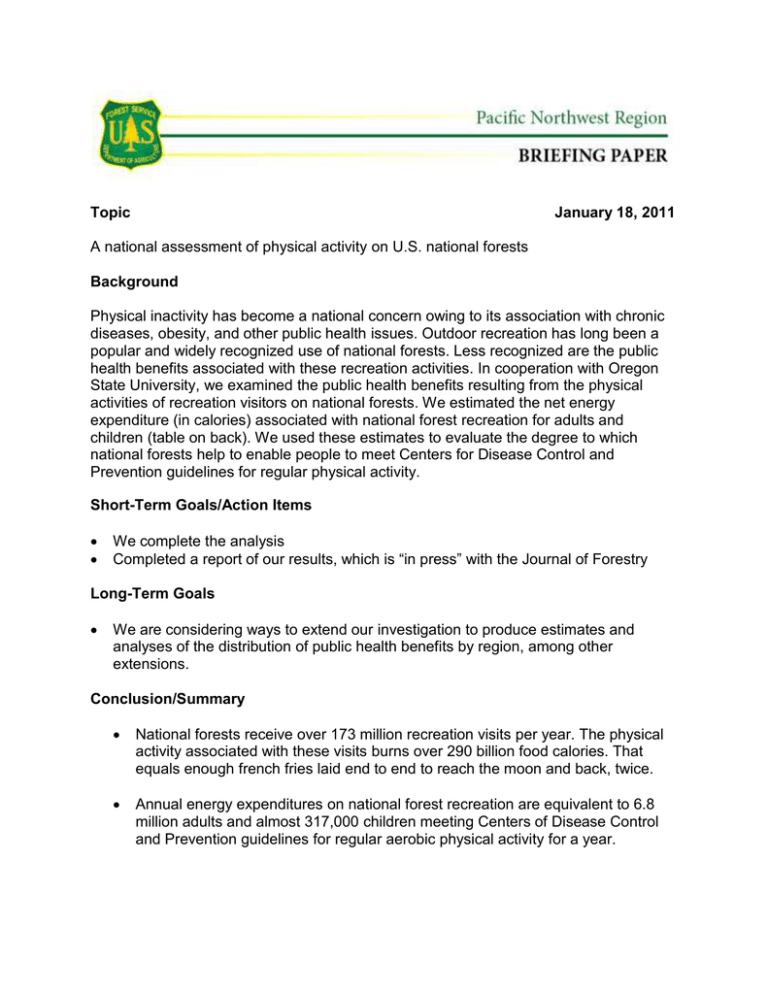
Topic January 18, 2011 A national assessment of physical activity on U.S. national forests Background Physical inactivity has become a national concern owing to its association with chronic diseases, obesity, and other public health issues. Outdoor recreation has long been a popular and widely recognized use of national forests. Less recognized are the public health benefits associated with these recreation activities. In cooperation with Oregon State University, we examined the public health benefits resulting from the physical activities of recreation visitors on national forests. We estimated the net energy expenditure (in calories) associated with national forest recreation for adults and children (table on back). We used these estimates to evaluate the degree to which national forests help to enable people to meet Centers for Disease Control and Prevention guidelines for regular physical activity. Short-Term Goals/Action Items We complete the analysis Completed a report of our results, which is “in press” with the Journal of Forestry Long-Term Goals We are considering ways to extend our investigation to produce estimates and analyses of the distribution of public health benefits by region, among other extensions. Conclusion/Summary National forests receive over 173 million recreation visits per year. The physical activity associated with these visits burns over 290 billion food calories. That equals enough french fries laid end to end to reach the moon and back, twice. Annual energy expenditures on national forest recreation are equivalent to 6.8 million adults and almost 317,000 children meeting Centers of Disease Control and Prevention guidelines for regular aerobic physical activity for a year. The distribution of these health benefits may differ with income, as visitors tend to come from higher income households. Proximity also is a factor—52 percent of recreation visits are people who live within 60 miles a national forest boundary. Estimated total annual net energy expenditure associated with outdoor recreation activities in national forests. Net energy expenditure (millions cal) Percentage Activity Adults Youths All* of total Downhill skiing 49,611 5,319 54,928 19.0 Hunting 48,955 3,670 52,626 18.2 Hiking and walking 47,014 3,200 50,214 17.3 Camping (developed) 18,996 4,784 23,781 8.2 Fishing 21,299 1,749 23,048 8.0 Backpacking 12,961 1,390 14,351 5.0 Relaxing 11,307 733 12,039 4.1 Cross-country skiing 9,118 644 9,762 3.4 Biking 6,772 390 7,162 2.5 Snowmobiling 5,249 241 5,490 1.9 Viewing nature 4,427 470 4,897 1.7 Motorized trail riding 4,378 251 4,629 1.6 Camping (primitive) 3,808 694 4,502 1.5 Off-highway vehicle use 3,518 275 3,793 1.3 Non-motorized boating 2,999 361 3,359 1.2 Horseback 2,039 144 2,183 0.7 Other 1,905 248 2,153 0.7 Driving for pleasure 2,039 67 2,106 0.7 Other non-motorized activities 1,472 526 1,999 0.7 Motorized boating 1,558 263 1,821 0.6 Viewing wildlife 1,499 135 1,634 0.6 Resort use 1,012 40 1,052 0.4 Gathering 905 144 1,049 0.4 Picnicking 287 79 366 0.1 Nature study 206 80 286 0.1 Historic sites 166 11 177 0.1 Other motorized activities 88 18 106 0.0 Nature centers 57 3 61 0.0 Total 263,645 25,929 289,574 100.0 * Ranked in descending order by “Net energy expenditure, all.” Contact Collaborators Jeffrey Kline, research forester USDA Forest Service 3200 SW Jefferson Way Randy Rosenberger Oregon State University Pacific Northwest Research Station Corvallis, OR 97331 Phone: 541-758-7776 Email: jkline@fs.fed.us Eric White Oregon State University

